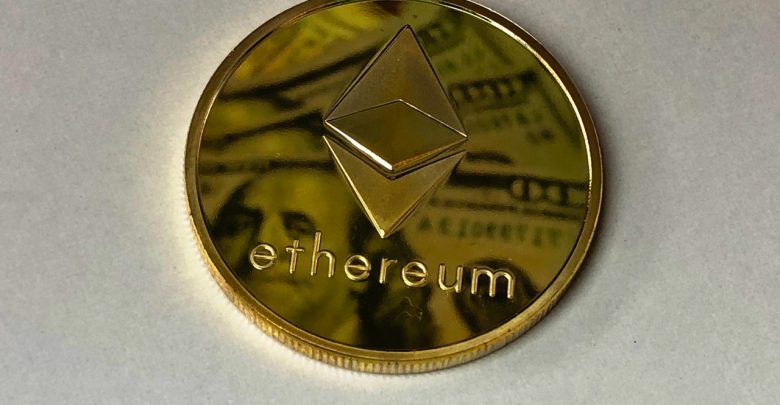What is Ethereum? A Beginner’s Guide to ETH

Ethereum, which has the second-highest market capitalization in the cryptocurrency industry, has attracted a great deal of interest from both financiers and crypto fans likewise.
In essence, Ethereum is a decentralized blockchain-based framework that helps hundreds of decentralized cryptocurrencies and ventures to be established and launched without the need for the developers to construct their personal blockchains from scratch.
Ethereum not only represents a substantial shift from the existing crypto and blockchain paradigm, but it also enables the rapid creation and introduction of innovative applications that provide specialty solutions for a wide range of sectors, including financial services.
While the benefit of Ethereum is evident to developers and the rest of the financial industry, many individuals who are somehow less informed about the technological advancements have difficulty comprehending it. That makes sense, though. All of us need assistance when it comes to learning new concepts and ideas. This article has been specially written for such people to help them understand the mechanisms behind Ethereum. A wide range of audiences, from total novices to intermediates, from huge financial investors to beginners, can likewise benefit from this paper.
In this article, you will learn all you need to know about Ethereum, including how it operates and its uses, without having to go too deep into its technological weeds.
Let us try understanding this potentially game-changing cryptocurrency-Ethereum.
Ethereum vs. Bitcoin: Which One Is Better?
If you are fascinated by Ethereum, the possibilities are that you have some understanding of Bitcoin too.
All cryptocurrencies are eventually contrasted to Bitcoin, which is a good thing since it makes it simpler to grasp them.
Bitcoin, the world’s first cryptocurrency, was founded in 2009 with the express purpose of establishing decentralized worldwide money, which it surely achieved. This money would not need the use of any intermediate financial institutions, yet it would still assure that transactions were secure and genuine. This was made feasible via the use of a groundbreaking technology known as “blockchain.”
This digital ledger, known as the blockchain, is constantly recording and confirming new information. It is used in the tracking and verification of Bitcoin transactions. Because a worldwide network of connecting nodes maintains the blockchain, it is almost impenetrable to corruption. As additional blocks are uploaded to the chain, they are being verified on a regular basis.
While Bitcoin is a decentralized blockchain infrastructure, Ethereum runs on a similar concept. The fact that they are decentralized implies that they are not controlled or issued by a centralized government. These two digital currencies have a lot in common, but they also have a lot that makes them unique.
Cryptocurrencies such as Bitcoin, for example, use blockchain technology to monitor who owns which digital money, making it an exceptionally effective peer-to-peer electronic payment system. Ethereum, on either extreme, is primarily concerned with the execution of computer code inside an application. Designers of Ethereum-based applications mostly utilize it to pay for public services and transactions costs.
The final dispute between Bitcoin and Ethereum as potential investment alternatives boils down to the risk tolerance of the person in question. Because the world is becoming more computerized and cryptocurrency’s acceptability is growing, both are likely to benefit in the near future. Among cryptocurrency specialists, Bitcoin is by far the more widespread and durable of the two, however the optimistic mood about Ethereum looks to have increased significantly over the previous year. As is the case with other investments, it is likely that Ethereum’s increased risk carries with it the possibility of greater profits.
However, as both cryptocurrencies have accelerated in recent years, both in terms of worth and demands, investors who have previously stepped away from this asset class should now reconsider both BTC and ETH as genuine investment options.
What is the mechanism through which Ethereum operates?
The Ethereum infrastructure, like the Bitcoin community, is made up of thousands of workstations all over the globe. All thanks to individuals who act as “nodes,” to facilitate transactions. As a consequence, the network is decentralized and extremely resistant to assaults. It is almost impossible for the network to shut down at some point. Even if one computer fails, it makes little difference since thousands of other computers keep the network running.
Ethereum is basically a single, decentralized system that operates a computer known as the Ethereum Virtual Machine, EVM as it’s commonly called. Each node has a copy of the computer in question, which implies that all transactions must be verified in order for everyone’s copy to be updated timely.
Networking engagements are otherwise referred to as “transactions,” and they are recorded on the Ethereum platform in the form of blocks. Miners validate the blocks before they are committed to the network, where they serve as digital ledgers for the channel. Moreover, a proof-of-work approach is being used to validate transactions. Each block is identified by a 64-digit code that is unique to it. Miners dedicate their computational power in order to find that specific code and then demonstrate that it is one-of-a-kind.
All Ethereum transactions, like Bitcoin transactions, are completely open to the public. All of the blocks that have been mined have been propagated to the rest of the system, verifying that the modification has been made and putting the blocks to everyone’s copy of the blockchain. Confirmed blocks are impenetrable and serve as a complete record of all blockchain applications since they cannot be altered.
Now the question is, where does the ETH originate from? A charge accompanies each transaction, referred to as “gas,” which is payable by the person who initiated the transaction. A portion of this charge is given to the miner who verifies the transaction, motivating future mining and guaranteeing the security of the network. Gas effectively functions as a restriction, limiting the number of operations a user may do inside a single transaction. It’s also in order to keep network trash to a minimum.
Because ETH is primarily used as a utility token rather than a store of wealth, its supply is almost limitless. In principle, Ether has always been in the market and is bound to stay, which also signifies that inflation should never depreciate the asset to the point where it becomes unusable.
Regrettably, for so many, Ethereum gas prices may become rather expensive depending on the amount of activity on the network. This is due to the fact that a block could only carry a certain quantity of gas, which fluctuates depending on the kind and number of transactions. As a consequence, miners have to prioritize transactions with the greatest gas prices, resulting in a race among users to verify transactions as quickly as possible. As a result of this rivalry, fees continue to rise, causing the network to become congested during peak periods.
The Benefits of Using Ethereum
Along with decentralization and anonymity, Ethereum offers many additional advantages, including the absence of censorship. For instance –, if anybody posts something really objectionable or offensive on Twitter, Twitter has the option to remove the message and penalize the offending person in question. On an Eth social media platform, on the other hand, that can only emerge if the population votes for it to happen. As a result, individuals with different perspectives may engage in a healthy debate, and themselves decide if something should be reported on their own. In short, the users have the power to vote and decide what action they prefer, rather than the owners having the sole power to do so.
The regulations of the Eth community also prevent malicious players from taking control. In order to impact the system in any possible way, anyone with nefarious intent will need to dominate 51 percent of the infrastructure, which is almost difficult in most circumstances to do. Until you have that power and dominance, you can never control any of the proceedings on this platform. Therefore, it can be confidently stated that Eth is much more secure than a standard server that may be hacked or compromised.
Finally, smart contracts, which streamline many of the actions conducted by centralized authority on the conventional web, are becoming more popular. A freelancer using a site such as Upwork, for example, can utilize the platform to identify customers and establish payment agreements. The business concept of Upwork is to take a portion of every agreement to pay its staff, server fees, and other expenses. If a customer uses Web 3.0, he or she may simply construct a smart contract that reads, “If the task is completed by X time, the cash will be released.” Due to the fact that the provisions are hard-coded into the contract, neither party can modify the terms of the contract after it has been written.
Lastly, it’s also becoming more accessible than before to get Ether. Corporations like PayPal as well as its Venmo subsidiary allow users to buy cryptocurrency with fiat cash straight from inside the program itself.
The Drawbacks of Using Ethereum
Like every other thing in the world, Ether has a number of significant flaws that must be addressed at the moment.
The first is a matter of scalability. In case you’re unfamiliar with the term “scalability,” it refers to a company’s ability to expand without being impeded by its organizational system or resource availability when confronted with rising production requirements. It is true that Eth is a highly upgraded technology that has lightening fast execution speeds. However, due to the nature of the PoW consensus algorithm, such rapid interaction is constrained by block validation periods and gas prices. Moreover, decentralization is a disadvantage too as some point as a centralized company, such as Visa, handles everything with utter delicacy and has refined the payment processing to a high level of perfection.
The second point to mention is accessibility. People unaccustomed to Ethereum’s architecture may find it too costly to build on and difficult to communicate. It is true that Eth but easy crypto to understand and work with. Eth sites contain some well-written literature on the subject, which is another important tool for attracting new people to the platform. However, there is a need to streamline the process of actually utilizing Ethereum. Implementing blockchain is not the same as knowing or learning about it. These are two really different things!
Additionally, specific wallets are needed by some sites; hence it’s necessary to transfer ETH from the existing wallet to the new one. Clients who are familiar with their existing banking system and wallets surely find this stage unnecessary and time-consuming. Also, don’t forget the fact that changing wallets, from one to another, is not beginner-friendly either.
What really is Ethereum Mining, and how does it work?
Mining refers to the process of verifying transactions in order for them to be processed and presented in the Eth database of blocks. The validation of every activity or modification to the blockchain, as previously said, is mandatory. The miners in the network are responsible for this.
For those who are curious, what do miners get as compensation for carrying out this role? Ether is the solution, of course! The miner is paid with Ethers for each successful verification that is performed.
The following are some examples of how Ether may be used:
• It operates in the same way as any other cryptocurrency. User-to-user transfers are possible since it may be held in Ethereum wallets.
• It may be used to purchase Ethereum Gas. Gas will be required if you desire to conduct any operation on the EVM or even if you just intend to activate any smart contract.
Mining, in addition to its function in the generation of Ether, is critical to the operation of the Ethereum network. In the actual world, the miners, to put it another way, perform one of the most crucial duties of the financial institutions. Such miners log blockchain interactions in the same way that banks do with financial transactions, and they are paid for their job. In doing so, they guarantee that fraud, double-spending, and other forms of financial mismanagement are avoided.
Proof of Work vs. Proof of Stake
For each specific blockchain, the procedure of mining is centered on one of the two basic consensus mechanisms – Proof of Work or Proof of Stake.
Proof of work is a decentralized consensus process that requires community users to invest energy in addressing an arbitrary mathematical problem to deter anybody from manipulating the system. It takes a large but manageable amount of work to dissuade frivolous or malevolent uses of computer resources, such as sending spam emails.
Proof of work (POW) is commonly employed in cryptocurrency mining, both for transaction validation and new token development. Payments for Bitcoin and other cryptocurrencies may be performed in a safe way between peers without the involvement of a trusted third party, thanks to the proof of work algorithm.
Proof of Stake (POS) is a unique consensus technique that was developed as a substitute to proof of work. It is a notion that asserts that a person’s ability to mine or verify block transactions is proportional to the number of coins they control. This implies that the more the number of coins possessed by a miner, the greater the amount of mining power he possesses.
POW is the classic method, which Bitcoin employs. It is more time-consuming since it necessitates the use of massive amounts of processing power. The second way is a more advanced and comprehensive one that Ethereum will utilize in the near future. Ethereum, on the other hand, currently employs a protocol that is a combination of the two.
Upcoming Ethereum Updates: The Long and Winding Route to the Future
Software is always evolving until it is no longer in use by its users. The Ethereum Foundation adheres to a roadmap that outlines future alterations and upgrades to blockchain technology. Because no system can ever operate at a high enough rate, scaling is always being improved. Indeed, Ethereum is evolving at the same pace as the world around it.
There’s no doubt in the fact that Ethereum is a remarkable blockchain technology that has made it feasible for thousands of initiatives to come to fruition.
The need of privacy and security continues to be stressed. Decentralized systems need ongoing vigilance in terms of security. Many parts of the future are still up in the air, unclear and vague. Innovative and latest applications may need new system capabilities that aren’t currently available. Although Ethereum’s future is promising, its future isn’t without its risk.
Due to the fact that markets and marketers might react in a number of ways, we can’t be sure this would affect the value of Ethereum. If the modifications result in an increase in the number of users, the price may climb. The price, on the other hand, may decline if mining is becoming more complex and time-consuming.
Tokenhell produces content exposure for over 5,000 crypto companies and you can be one of them too! Contact at info@tokenhell.com if you have any questions. Cryptocurrencies are highly volatile, conduct your own research before making any investment decisions. Some of the posts on this website are guest posts or paid posts that are not written by Tokenhell authors (namely Crypto Cable , Sponsored Articles and Press Release content) and the views expressed in these types of posts do not reflect the views of this website. Tokenhell is not responsible for the content, accuracy, quality, advertising, products or any other content or banners (ad space) posted on the site. Read full terms and conditions / disclaimer.







